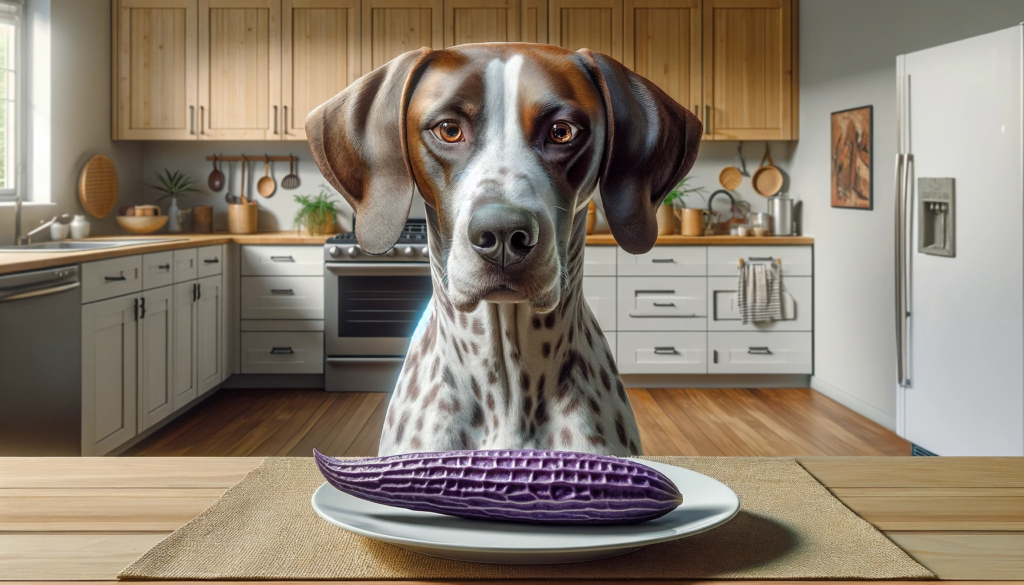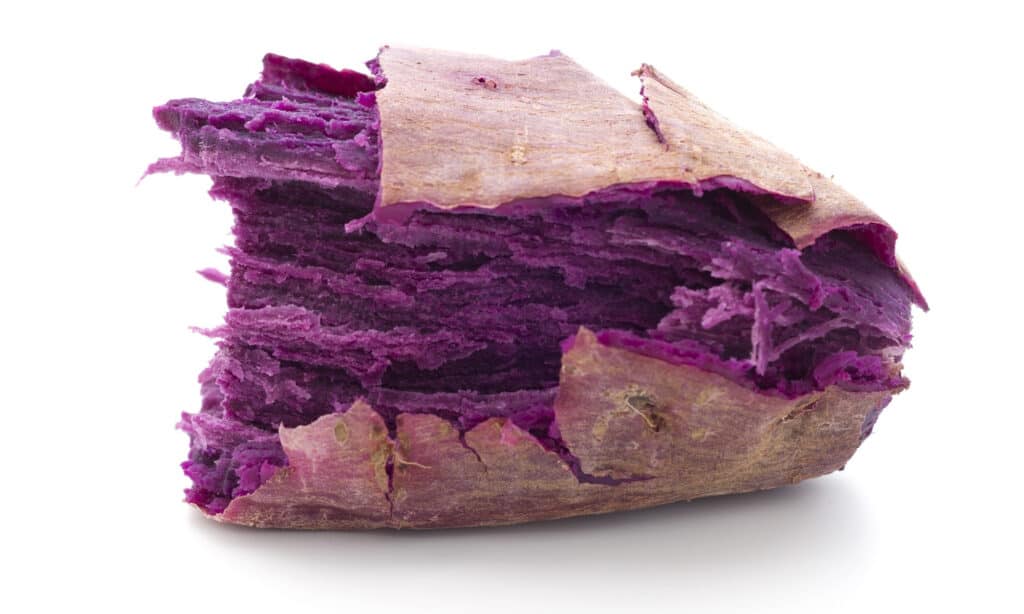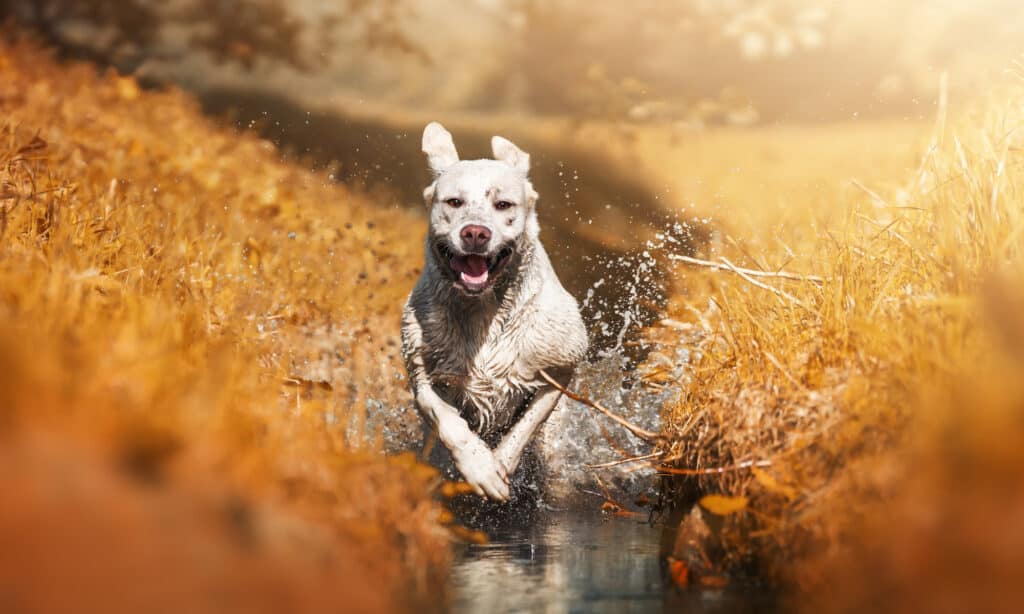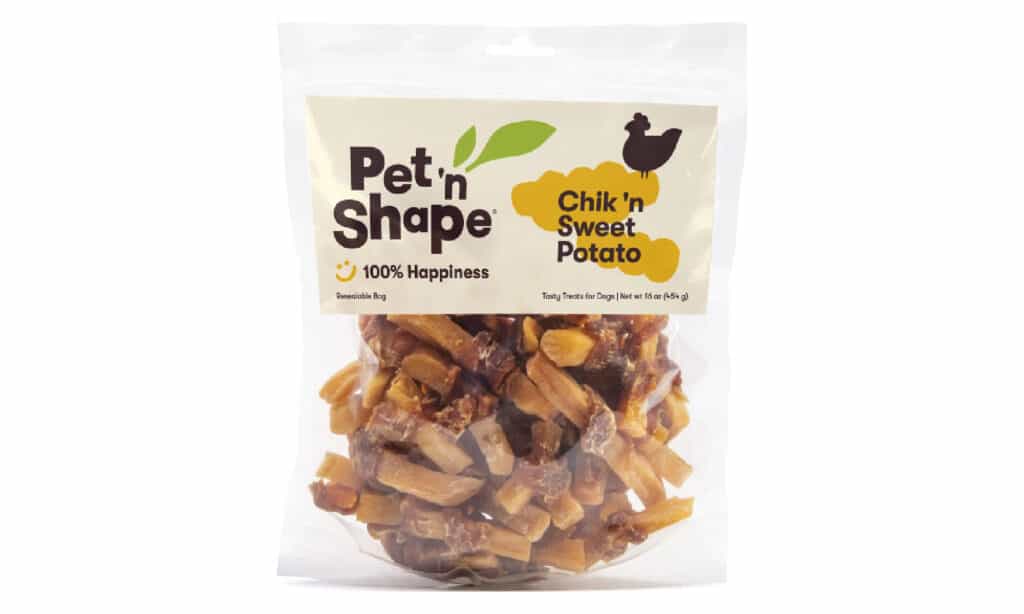As pet owners, we all want to provide the best nutrition for our furry companions. And with the popularity of human foods that are not traditionally fed to dogs, such as avocados, blueberries, and even pumpkin spice, it’s natural to wonder: can my dog eat ube?
Ube, also known as purple yam, is a root vegetable that’s native to the Philippines and commonly used in Southeast Asian cuisine. It’s a versatile ingredient that can be boiled, mashed, baked, or fried, and is often used in desserts like ice cream, cakes, and pastries. Ube is also a good source of fiber, vitamin C, and potassium, among other nutrients.
But is it safe for dogs to consume? Can they reap the same health benefits as humans, or are there potential risks involved? In this blog post, we’ll explore the question of whether dogs can eat ube, and what pet owners should consider before sharing this colorful tuber with their four-legged friends.

What is Ube:
Ube, also known as purple yam, is a root vegetable that’s commonly used in Southeast Asian cuisine. It has a distinct deep purple color and a mildly sweet taste that makes it popular for use in desserts like ice cream, cakes, and pastries. Ube is native to the Philippines but is also grown in other parts of Asia, as well as some tropical regions in South America and Africa. The vegetable is high in fiber and contains vitamins C and B6, potassium, and manganese. Due to its vibrant color and unique flavor, ube has gained popularity in Western countries in recent years and is now available in many specialty stores and restaurants.
Can Dogs Eat Ube:
While ube is generally considered safe for dogs to eat, it’s important to remember that dogs have different nutritional needs than humans. While humans can benefit from the fiber, vitamins, and minerals found in ube, dogs require a different balance of nutrients in their diet.
Additionally, some dogs may be sensitive to new foods, and introducing a new food like ube too quickly can cause digestive upset, such as vomiting or diarrhea. It’s always a good idea to introduce new foods to your dog’s diet gradually, starting with small amounts and watching for any adverse reactions.
Finally, some forms of ube-based desserts, such as cakes or ice cream, may contain ingredients that are harmful to dogs, such as chocolate, sugar, or artificial sweeteners. These can cause serious health problems like vomiting, diarrhea, seizures, or even death in extreme cases.
In summary, while dogs can technically eat ube in moderation, it’s important to consider their individual nutritional needs and to introduce new foods slowly and with caution. If you’re unsure about whether a particular food is safe for your dog, it’s always best to consult with a veterinarian first.
Harmful Ingredients in Ube:
While ube itself is generally considered safe for dogs to eat in moderation, some ube-based desserts may contain ingredients that are harmful to dogs.
One of the most common harmful ingredients found in desserts is chocolate, which can cause vomiting, diarrhea, and even seizures or death in dogs. Chocolate contains theobromine, a compound that dogs metabolize much more slowly than humans, leading to a buildup of toxins in their system.
Other potentially harmful ingredients in ube-based desserts include sugar and artificial sweeteners. While small amounts of natural sugars are typically safe for dogs, consuming large amounts can cause upset stomach, obesity, and dental problems. Artificial sweeteners like xylitol, commonly used in sugar-free desserts, are especially dangerous for dogs, as they can cause a rapid insulin release and a drop in blood sugar levels, leading to seizures, liver failure, or even death.
In general, it’s best to avoid giving your dog any desserts or human foods that contain chocolate, sugar, or artificial sweeteners. If you want to share ube with your dog, it’s best to prepare it plain, boiled, and mashed, without any added sugar or ingredients.

Safe Ingredients in Ube:
When it comes to incorporating ube into your dog’s diet, it’s best to stick to simple, plain preparations without added sugar or artificial sweeteners. Some safe ingredients that can be added to ube to make it more appealing and nutritious for dogs include:
- Plain, cooked chicken or turkey: Adding a small amount of cooked, shredded chicken or turkey to boiled, mashed ube can make it more palatable for dogs and provide a source of lean protein.
- Carrots or green beans: These vegetables are low in calories and high in fiber, vitamins, and minerals, making them a healthy addition to ube-based meals. Just be sure to cook them thoroughly and chop them into small pieces to prevent choking.
- Plain, low-fat yogurt: A small amount of plain, low-fat yogurt can add a creamy texture and probiotics to ube-based meals, which can aid in digestion and promote healthy gut bacteria.
- Coconut oil: Adding a small amount of coconut oil to ube can provide healthy fats and improve the texture of the food. Just be sure to use plain, unflavored coconut oil, and start with a small amount to avoid digestive upset.
Overall, it’s important to remember that dogs have different nutritional needs than humans, and should be fed a balanced diet that meets their specific requirements. While ube can be a nutritious and tasty addition to your dog’s diet in moderation, it’s important to avoid adding any harmful ingredients and to consult with a veterinarian if you have any concerns or questions.
What Signs To Watch For If Your Dog Accidentally Ate A Lot of Ube?
While small amounts of ube are generally considered safe for dogs to eat, consuming a large amount can lead to digestive upset and other health problems. Here are some signs to watch for if your dog eats too much ube:
- Vomiting or diarrhea: This is the most common sign of digestive upset in dogs and can occur shortly after consuming a large amount of ube.
- Lethargy or weakness: If your dog seems unusually tired or has trouble standing or walking, this could be a sign of an underlying health problem.
- Loss of appetite: If your dog refuses to eat or seems disinterested in food, this could be a sign of nausea or discomfort.
- Increased thirst or urination: Eating a lot of ube can cause dehydration and increased urination, which can lead to further health problems if left untreated.
- Abdominal pain or discomfort: If your dog is pacing, whining, or seems to be in pain, this could be a sign of abdominal discomfort.
If you notice any of these signs in your dog after they have eaten a lot of ube, it’s important to contact your veterinarian right away.

When or If You Should Go To The Vet?
If your dog has consumed a small amount of ube and shows no signs of digestive upset, there’s usually no need to take them to the vet. However, if your dog has eaten a large amount of ube or shows any signs of illness or discomfort, it’s important to contact your veterinarian right away.
Some signs that your dog may need veterinary attention after eating ube include:
- Vomiting or diarrhea that persists for more than 24 hours
- Signs of dehydration, such as dry gums, sunken eyes, or lethargy
- Abdominal pain or discomfort that persists for more than a few hours
- Loss of appetite or refusal to drink water
- Blood in vomit or diarrhea
- Lethargy or weakness that persists for more than a day
- Seizures, collapse, or difficulty breathing
If you’re unsure whether your dog needs veterinary attention after eating ube, it’s always best to err on the side of caution and contact your vet. Vets can evaluate your dog and advise treatment over the phone or in person, which may involve medication, exams, or at-home care.
Remember, early intervention is key when it comes to treating any health problem in dogs, so don’t hesitate to reach out to your veterinarian if you have any concerns about your dog’s health after eating ube.
Safe Dog-Friendly Alternative to Ube:
Certainly! Here are some safe and dog-friendly alternatives to ube that you can incorporate into your dog’s diet:
- Sweet potatoes: Sweet potatoes, like ube, are low-fat root vegetables that are rich in fiber, vitamins, and minerals. You can boil or bake them, and then mash them up and add them to your dog’s regular meals.
- Pumpkin: Another nutritious root vegetable, pumpkin is high in fiber and is a great source of vitamins A and C. Cook fresh pumpkin or plain canned pumpkin puree and add it to your dog’s food for a nutritious alternative to ube.
- Carrots: Carrots are a crunchy and nutritious vegetable that’s low in calories and high in fiber, vitamins, and minerals. Raw or cooked, grated or chopped, carrots make a healthy treat for dogs.”
- Green beans: Green beans are a great source of fiber and vitamins, and are low in calories. They can be given cooked or raw, and can be a great snack or addition to your dog’s regular meals.
- Apples: Apples are a tasty and healthy fruit that’s high in fiber and vitamins. Remove apple seeds and core, chop into small pieces before giving as a treat or adding to dog’s food.
These are just a few examples of safe and dog-friendly alternatives to ube. Remember to always introduce new foods gradually, and to monitor your dog for any signs of digestive upset or food allergies. If you’re unsure whether a particular food is safe for your dog, it’s always best to consult with a veterinarian first.
Healthy Store-Bought Options:
In conclusion, while ube can be a nutritious and flavorful addition to your own diet, it’s important to consider your dog’s individual nutritional needs and any potential health risks before sharing this food with them. Safe for dogs to eat plain, cooked ube in small amounts, but avoid harmful ingredients like chocolate, sugar, and sweeteners.
If you do decide to share ube with your dog, it’s best to stick to simple preparations without added sugar or ingredients, and to introduce new foods gradually and in moderation.If your dog feels sick after eating ube, contact your vet for advice.
Remember, while it can be tempting to share our favorite foods with our furry friends, their nutritional needs and digestive systems are different from ours. Mindful feeding helps ensure your dog’s long-term health and well-being.
~LIndsei



